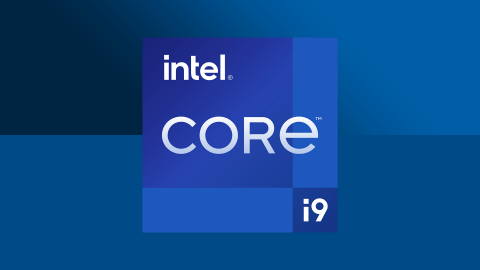Introduction
Hello, techies! Just when you are back at GigaGuideTech, your one-stop pit for anything that blinks and beeps, today we have to delve into Intel’s newest batch of processors—the “E” series. Right after the Intel i9-14901TE, i9-14901E, and i9-14901KE were officially announced, something quite interesting happened: Intel removed E-cores or Efficiency Cores and shifted its focus totally to the development of P-cores—Performance Cores. All new, what do these processors have to offer, and how are they fairing against their 2024 competition?
What Are Intel “E” Processors?
The “E” series of Intel is an embedded-specific line belonging to the 14th Gen Raptor Lake lineup. It ditches complex hybrid architecture with both P- and E-cores and only retains the former. This step is rather enormous for people who want peak performance without extra hassle and instability brought in by the E-cores into certain applications.
Lineup Key Models
- Intel Core i9-14901KE: This would be the high-end variant, sporting 8 P-cores, with a maximum clock frequency of up to 5.8 GHz and a TDP rating of 125 W.
- Intel Core i9-14901E: Most similar is an i9 series feature to that of the KE variant, except for a max clock of up to 5.6 GHz at 65 W TDP.
- Intel Core i9-14901TE: Energy-efficient variant with a TDP of 45W and a maximum clock speed of 5.4 GHz.
Specifications Analysis:
Intel Core i9-14901KE
- Cores and Threads: 8 P-cores, 16 threads
- Base Clock: 3.8 GHz
- Boost Clock: 5.8 GHz
- TDP: 125W
- Socket: LGA1700
- Cache: 36MB L3
Intel Core i9-14901E
- Cores and Threads: 8 P-cores, 16 threads
- Base Clock: 3.4 GHz
- Boost Clock: 5.6 GHz
- TDP: 65W
- Socket: LGA1700
- Cache: 36MB L3
Intel Core i9-14901TE
- Cores and Threads: 8 P-cores, 16 threads
- Base Clock: 3.0 GHz
- Boost Clock: 5.4 GHz
- TDP: 45W
- Socket: LGA1700
- Cache: 36MB L3
Performance Expectations
By focusing only on the P-cores, Intel can maximize performance in scenarios in which multi-threading and high clock speeds are vital. This makes the “E” processors especially qualified for industrial and, more so, embedded applications since such markets rely on reliability and continuous operation at high performance.
Gaming and High-Performance Computing
This can thus be regarded as both a blessing and a curse for gaming and other high-performance computing activities. It’s where ultra-high clock speeds and good multi-threading combine to deliver quite outstanding performance in the most CPU-bound games and applications. By contrast, the absence of the E-cores could limit power efficiency and multi-tasking in the event where more lightly loaded tasks could have been offloaded to E-cores.
Industrial Application
These processors must be geared towards industrial use. A less complicated architecture also lessens the potential instability from working with multiple core types. This makes the “E” series pretty ideal for systems such as embedded, automation, or any other industrial use that might require very robust and predictable performance.
Comparing
Intel Core i9-13900K
- Cores and Threads: 8 P-cores + 16 E-cores, 32 threads
- Base Clock: 3.0 GHz (P-core)
- Boost Clock: 5.8 GHz (P-core)
- TDP: 125W
While certainly slower than the rest of the lineup which Intel offers, the i9-13900K still features a hybrid architecture mix of P- and E-cores that works out better for general system efficiency and multitasking. At the same time, the pure P-Core design of the i9-14901KE. Generally, it focuses on raw performance—the same use case might be favored.
Pricing and Availability
While this is the case, detailed pricing for the new processors has not been listed yet officially. However, by taking the previous generations and taking the trend of the market into consideration, we can easily make out that it will be very aggressive and competitive, targeting high-end consumer and industrial segments.
Expected Price Range
- Intel Core i9-14901KE: Around $600 – $700
- Intel Core i9-14901E: Approximately $500 – $600
- Intel Core i9-14901TE: Likely $400 – $500
The estimates are present trend based and represent the price levels of comparable processors with high performance. As a rule, one should always check the latest prices from reliable retailers.

Conclusion
Efficiently, the new “E” processors from Intel represent significant changes in the approach of the high-performance computing company. The models are likely three of the most notable: i9-14901KE, i9-14901E, and i9-14901TE. What Intel did here was to basically create a P-cores-only processor series by knocking off the E-cores to maximize performance. This has created a breed of processors for industrial use and high-performance users who want the maximum performance without adding complexity, such as that by hybrid architectures.
While high clock speeds and robust multithreading capabilities will certainly keep them competitive, at least on paper, it surely can’t be the best choice for all scenes if it comes with a lack of e-cores. Again, it all depends on what your needs and use cases are, but with Intel’s new “E” series, there are certainly some compelling options for 2024 and beyond.
Remember to stay locked to GigaGuideTech for in-depth reviews, comparisons, and the latest tech news. Should there be any queries or further clarifications needed, do drop a comment below!










